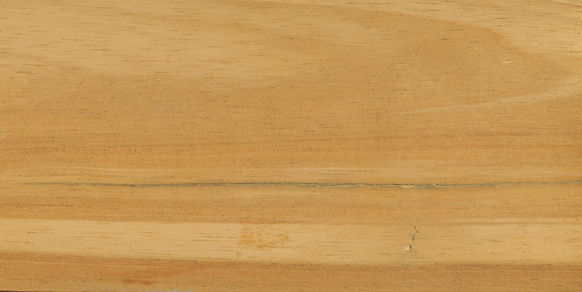Mahogany other than Swietenia: Trichilia
- Gaskell Guitars Australia

- Sep 17, 2020
- 3 min read
Updated: May 17
Natively-grown Swietenia (American mahogany) is no longer available in the world market and has been commercially banned since 2003. Today, American mahogany is grown only in plantations, mainly in Asia and the South Pacific. Plantation mahogany accounts for 95% of world trade in American mahogany.
To understand why, read this: What is Mahogany?
However, Swietenia is not the only genus in the Meliaceae (Mahogany) family that yields high quality timber. The Meliaceae family consists of 49 genera with approximately 550 species. Some have timber uses and some are even used as direct replacements for Swietenia. Others are merely plants and may only produce fruit, oil and seed often used for medicines or lotions. Of the ones that do yield timber, some include the word "mahogany" in their trade name and others do not. There are two terms to know:
GENUINE MAHOGANY as a term applies to mahogany of the Swietenia genus only, wherever grown.
TRUE MAHOGANY describes the timber of any Mahogany family genus other than Swietenia.
Many other mahogany timbers other than Swietenia are good tone woods and quite suitable for the manufacturing of musical instruments such as electric guitars and drums.
Trichilia
Trichilia is a Mahogany family genus with 70 species, four of which are native to Africa and the remainder native to West Indies, and ranges from Mexico through Central America to Brazil and Bolivia in South America. There are 43 species alone in Brazil. Two of the four African species have timber uses, and one species of the American species is recognized for its timber uses. Most American species are listed on the IUCN Red List Of Endangered species as “vulnerable” or “endangered.”
NATAL MAHOGANY
Trichilia emetica, known locally as NATAL MAHOGANY, CAPE MAHOGANY, and ETHIOPIAN MAHOGANY is one of four African species of Trichilia, native to Botswana, Burkina Faso, Chad, Congo, Eritrea, Ethiopia, Guinea, Guinea-Bissau, Kenya, Malawi, Mali, Mozambique, Namibia, Nigeria, Senegal, Somalia, South Africa, Sudan, Swaziland, Tanzania, Uganda, Yemen, Zambia, and Zimbabwe. It's wood is a pinkish colour. For a hardwood it is quite soft. Timber uses include carvings, traditional folk musical instruments, household implements, furniture, bats and canoes. In the 19th century, it was used for repairing ships in the KwaZulu-Natal region. It is also used as a shade tree in gardens and to control erosion. The oil is used locally as a topical medicine. Mafura butter is a moisturizing cream made from the seeds and is a popular hair and skin care product in Africa. There is no export trade in the timber.
References:
FOREST MAHOGANY
Trichilia dregeana is the second of the four African tree species of Trichilia and the second of two species with timber uses. It occurs from Cote D’Ivoire to Ethiopia, south to Angola, Malawi, Mozambique, Zambia, Zimbabwe and the Eastern Cape of South Africa. It grows in coastal and mountainous evergreen forests, hence the name. The tree is also grown to provide shade for coffee plantations. The wood is a pale pink, soft, evenly grained and easily worked. In Southern Africa its wood is commonly used for carving as well as for indoor furniture, household utensils, shelving, construction, dugout canoes, traditional African musical instruments, firewood, and for making charcoal. Its seeds, oil, leaves, root and bark have similar medicinal uses to those of Trichilia emetica. Seeds specifically are harvested on a commercial scale from wild trees for the industrial production of pharmaceutical products, and for making soaps, candles and cosmetics. There is no international trade of Forest Mahogany timber.
References:
BROOMSTICK
Trichilia hirta is native to the West Indies and ranges from Mexico through Central America to Brazil and Bolivia in South America. It has many local Spanish names and is known in English as BROOMSTICK. The colour of the timber varies from pink, brown to yellow depending on where it is grown. Trichilia hirta has no restrictions and is not listed with any concerns on the IUCN Red List of Endangered Species. Its timber has been used for oars, broom handles, and local carpentry as well as for fuel, stakes, and fence posts. There appears to be no export market for this wood.
References:










Comments